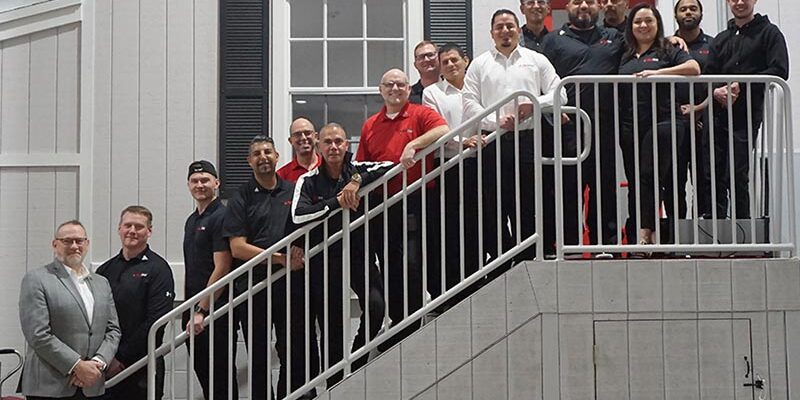How to Conduct a Product Audit

By Michael Wilson
One of the impacts of the pandemic is that all cleaners, including carpet cleaning professionals, are taking a second look at the products and cleaning solutions they use. They are evaluating them based on several criteria, including which are best at protecting occupant health (a top consideration during the ongoing pandemic), which are safest for technicians to use, which perform well, and also which are most cost-effective.
Examining such issues subjectively is not always beneficial. We need a formal investigation, and in most cases, this is accomplished by conducting a product audit. Usually, these are best performed with three or more people who are familiar with the products being analyzed and who use them regularly. Conducting an audit with multiple users brings more experience to the table and helps broaden the scope of the evaluation.
Product audit process
There are a few basic steps and best practices to follow to ensure an objective product audit. Before conducting the evaluation, consider the following:
- Price and performance often do correlate (you typically get what you pay for), but this is not necessarily true in all cases. Price should not sway the evaluation of a product’s effectiveness, so focus first on objective product performance when conducting a product audit. Consider the costs of the product later.
- While those involved in the product audit should be familiar with the products, it may be warranted to get additional product feedback from clients where the product is used.
- Allow enough time to conduct a product audit thoroughly. Important decisions can come from a product audit, which can impact your business for several months, or even years, into the future.
Once you have selected the products to be evaluated, assembled your audit team, and set aside the necessary time, follow these basic steps for conducting a product audit:
- All products used for the same or similar purpose are evaluated at the same time. However, to make the process easier, limit yourself to four products at a time. An example would be a comparison of four different spotters from four different manufacturers.
- As they are evaluated, each product is given a score indicating effectiveness, ease of use, and overall performance. A typical scoring method is a rating in each category of one to five with one being poor and five being excellent.
- After the performance evaluation is complete, reveal the price of each product and rate according to cost-effectiveness with a one being very costly and a five being very cost-effective. Be sure to account for any differences in concentration so that the price per volume is consistent across products.
- All scores are then averaged for all products being evaluated.
Product audit in action
Now that we know the basics of conducting a product audit, let’s take a look at possible results using the following scenario.
Four products, A, B, C, and D, have been analyzed. Products A and C receive low (poor) evaluations, while products B and D have comparable high evaluations. The company chooses to stop purchasing products A and C due to their poor appraisals.
Products B and D both perform and cost about the same. However, the auditor wants to select only one of these two products.
When this happens in a product audit, we must investigate other factors that could influence which product is best for the company. In this case, the company considered the following:
- Product B has been used for several years by all the technicians. No additional training is required to use this product.
- Product B is green certified, whereas product D is not. Because many clients want environmentally preferable cleaning products, this gives product B the upper hand.
- Product D is sometimes in short supply, which could pose problems in the future.
Adding these factors to the evaluation makes clear that product B is the best choice for this company.
Other benefits
In our scenario, the company decides to purchase and use only product B. Making such a decision has several benefits. The first is cost savings: Eliminating the purchase of the other products will help reduce costs. Further, purchasing large quantities of product B can result in possible discounts from the manufacturer or supplier.
Additional benefits include the following:
- More closet/truck space: Storing one brand of cleaning solution takes a lot less space than four different ones.
- Less confusion: Fewer products means minimizing the likelihood of selecting the wrong product for a specific purpose.
- Greater safety: Different cleaning solutions may have different safety concerns. Minimizing the number of products used helps workers know their products, ensuring worker safety.
- Revelation: Often when a product audit is conducted, it is the first time we actually evaluate the products used in our everyday work. Expect a few surprises to be uncovered in the process like technician dissatisfaction with a product’s performance.
Keep auditing
As to how often a product audit should be conducted, the answer is that it can vary. If no new products are selected or used after completing one product audit, another product audit may not be necessary.
However, new products are often introduced over time. When this happens, companies find they are in the same boat as before, purchasing several products, all used for the same or similar purposes. That’s when it’s time to conduct another product audit and refocus product purchasing once again.
Michael Wilson is AFFLINK’s Vice President of Marketing and Packaging. He has been with the organization since 2005 and provides strategic leadership for the entire supply chain team. Wilson enjoys working with the Wounded Warrior Project, fishing, and improving his cooking skills in his free time. He can be reached through his company website at www.AFFLINK.com.












